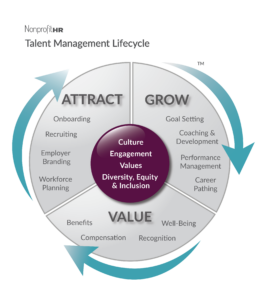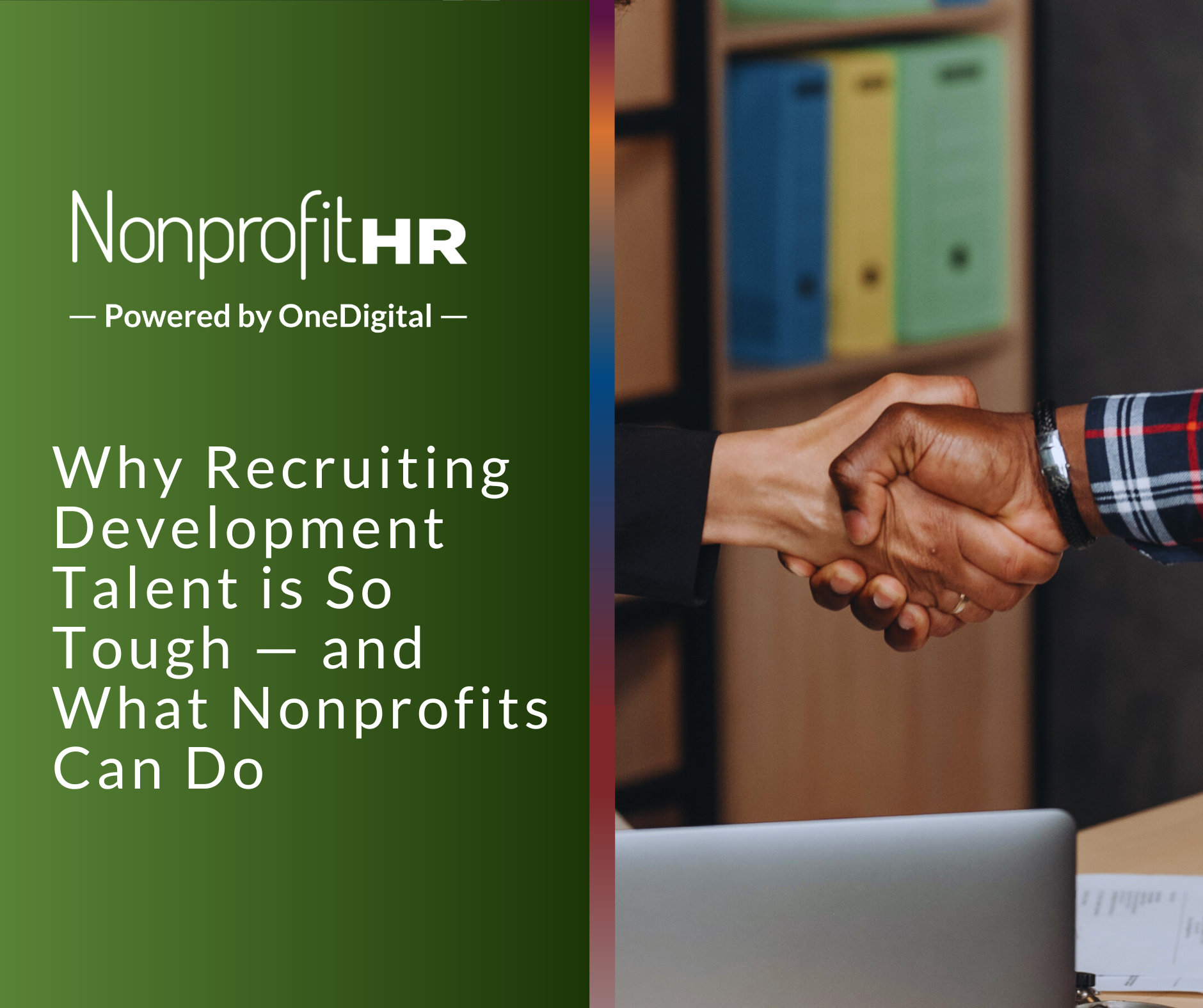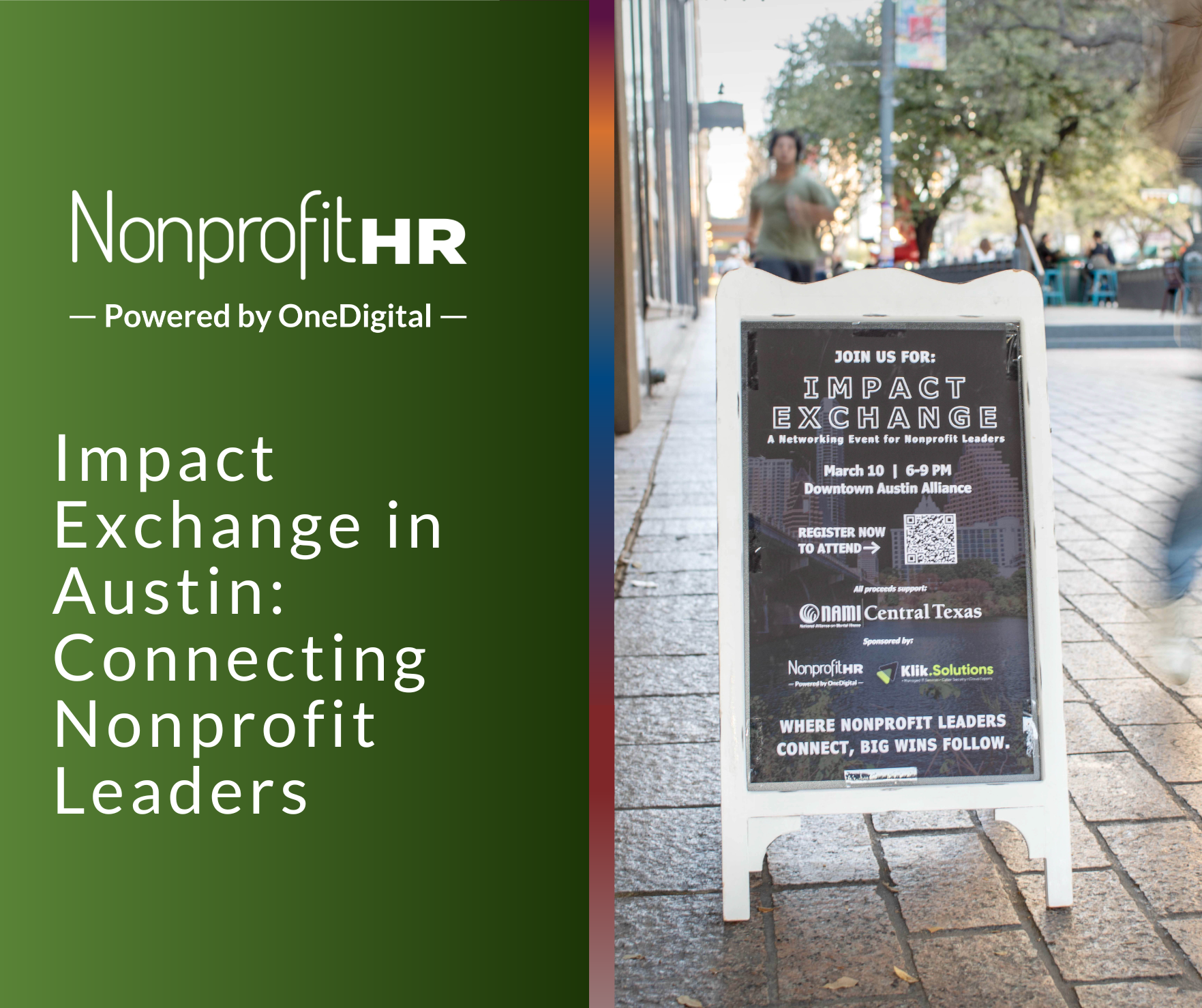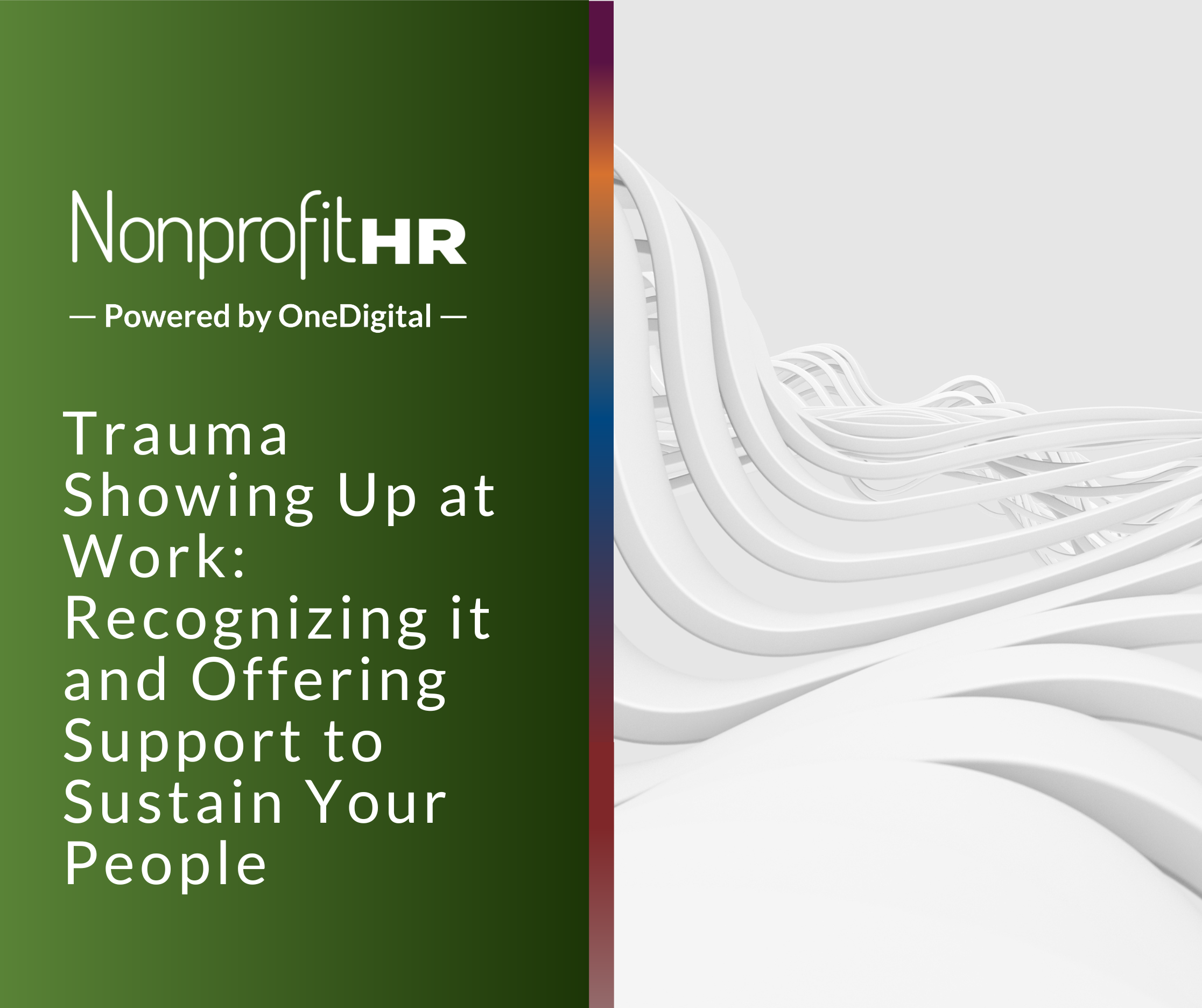WTOP: 5 ways nonprofits can…
We received a large number of questions from participants in our webinar, Reviving & Sustaining Your Organization’s Commitment to DEI, so our EDIJ experts are here to weigh in. Read below for insights from Bryan W. Jackson, Senior Consultant, EDIJ, and contributing EDIJ team members as they answer your most pressing questions on this topic.
Plus, access the webinar recording now to walk through how to assess your organization’s current state as it relates to DEI, re-energize your initial DEI commitment, celebrate your DEI gains and more.
Q&A With Our EDIJ Experts: Reviving & Sustaining Your Organization’s Commitment to DEI
General
What are some examples of steps to create a space where folks can show up authentically? Are there simple things you can suggest to organizations genuinely committed to this effort?
One of the best ways to create spaces where people can show up authentically is to create ERGs or affinity groups where employees can be vulnerable and in community with one another. Organizations can also encourage leaders to model authenticity and empathy in everyday interactions. Another important step is to prioritize psychological safety via anonymous feedback, team building and power sharing.
How does trauma relate to the ongoing DEI journey that organizations are undergoing?
First, we must acknowledge that trauma is real, and the definition of trauma can mean different things to different people, whether it is related to how someone identifies or how they are interacting with things in society. Those are two different things. COVID-19 impacted all of us, and that’s trauma. As it relates to identity, for example, if you are someone who has previous health conditions and are more worried about health concerns, there’s trauma related to that. If you happen to not have healthcare, there’s trauma related to that. Trauma can’t just be a blanket term. What an organization must understand is that individuals may have experienced trauma outside of the context of work, and it is important not to exclude that from a person when they are inside of the workspace.
We also have to make space for previous work trauma. Previous work trauma is how employees have engaged with their previous employers and it can bring trepidation into the new current space. If there aren’t any mechanisms in place to lift it, address it or solve it, that individual may feel there is no infrastructure in place to support them in voicing that. What we don’t talk about becomes taboo and what becomes taboo becomes suppressed. And when work trauma is suppressed, in combination with the ongoing trauma an individual may be dealing with, what you often get is that people find themselves reluctant to engage because they don’t know what the outcome is going to be.
It’s also important to note that there isn’t a trauma that trumps another trauma. What I mean by that is, if you are a cisgender white male without any disabilities that has microagressed someone and you were called out and it impacted you, there’s trauma in that. And if you are someone who identifies as LGBTQIA+ and you are neurodivergent and you don’t want to come out because you feel this space isn’t safe for you as a result of a past experience, there’s trauma in that too. One trauma doesn’t make another trauma less valid. However, there are people who feel they don’t have trauma because they don’t have the ability to vocalize it because they present a certain way.
In order to address this, organizations should offer and encourage individuals to seek mental health support. They should provide space for staff to take time off work to meditate or provide open feedback. Talking about mental health and what trauma is as it relates to you as an organization and the individuals that are in the organization, as well as how everything that is happening outside of the context of work — politically, socially, emotionally, physically — is also part of the DEI journey within your organization.
And so, the short of it is your organization needs to name that trauma is something that is real and it is impacting all of us. Start the conversation. It needs to be looked at through examining the activation, initiation and then how are you going to have support in place for reconciliation. Consider the following questions: How are we going to start talking about trauma? How are we going to name it? How can we as an organization mitigate the trauma that may come throughout this process? And then, what infrastructure can we put in place to support those who have experienced trauma?
Leadership
Ensuring that leadership is being held accountable for their words and actions is important. Ask leadership for the reasoning why they have decided to engage in EDIJ efforts that could be perceived as performative. Sharing with leadership how and why these efforts have landed as performative is important as well. Forming a DEI committee with an executive sponsor can be a great collaborative effort as well to help leadership stay accountable and share power through implementing EDIJ initiatives.
As it relates to being the sole professional, while your title may reflect it, the narrative that you are the only person dedicated to DEI efforts in your organization needs to change. Who else in the organization is on this journey with you?
There is strength and power in numbers. Do you have the full support of your Executive Director (ED) and CEO? My first recommendation is that you have to have an additional voice because your ED or CEO are the ones to be listened to within board meetings. Where do they fall in terms of their support of the DEI initiative in your organization?
The second recommendation is identifying the board liaison or board president, who more often than not has the ear of the rest of the board. If you have the backing and support of that president, it allows for your voice to have legitimacy within the context of the board. It also provides you a pathway into strategic organizational and board governance support that could come with what you are seeing and what they are able/capable of doing as a board. The best way to support the board is to include the voice of the ED/executive and CEO and the board liaison or president as your support to be a part of the conversation.
I would highly persuade anyone away from addressing the board from a deficit perspective. It should be from a solution-oriented perspective of what you are seeing with the data to support that. Ensure also that the data is not being presented as accusatory — stick with the facts. When you have the data that supports what you are seeing, with the support of the ED/CEO and it’s being vocalized by the board president, there is legitimacy in that because it’s been vetted three times.
And, it’s also great to have a pathway of being able to get some anonymous feedback on where the board falls on this DEI journey. The reason I say that is because not everyone on the board may feel the same way. However, the loudest the voice on the board is more often than not is the one that is heard.
So, in landing this plane, it shouldn’t just be seeing the deficit and then creating a training. It has to be more of how is that data showing what you are seeing and is it consistent? Is that data connected to a decision or choice that lives within the board? Or does that data reflect something that is happening from a programmatic side, staff side, volunteer side, fundraising side, etc.? When you are ready to show the data, have additional voices that can support (i.e. executive/board liaison/president). Only then, will you be able to answer this question because you’ve done your due diligence. Come prepared, come with solutions to the problem, have additional voices in the room that can lift what is important and then be able to demonstrate where everyone’s roles fall in moving it forward.
Staff Relations
It is important here to be compassionate with the employee who does not agree with racial equity/DEI efforts, but it is also important to think critically about the outcome of stopping DEI efforts. Halting or delaying racial equity initiatives due to one employee’s disapproval could be harming marginalized employees who could benefit from these initiatives. It is also helpful to realign efforts with the values of the organization. If your organizational values include racial equity, explain to the colleague that you appreciate their concerns but ultimately the organization needs to align with the values.
This is not an easy question and there is not one easy answer. There are many factors that play into how someone could respond in real-time. Whenever there is someone who is microagressed, we have to be aware that there is trauma involved. There is emotional trauma, cognitive trauma and there is trauma based on what that relationship will look like moving forward.
The other thing that has to be considered is if the one who was microaggressed is of an identity that is marginalized, there’s a number of thoughts that can live in that person’s psyche about their reputation, their job safety and being labeled in a certain way.
One of the factors that come into play is the power dynamic of the microagressed and the microaggressor. In addition, the location is important because it occurring in a public forum in front of other people is a different dynamic than it happening as a flippant comment on Zoom. You also need to be mindful of the reputation of the microaggressor. If this behavior is that person’s pattern and reputation, it will be difficult to bring about change without any infrastructure put in place to address that behavior.
Which brings me to my next point of, what parameters does your organization have in place that allow people to share their grievances about work? Is that an HR matter? Is that an ED matter? Is that a board president matter? And, are any of those individuals that happen to be in those positions of varying degrees of diversity? Do they have different identities to ensure various people will feel safe to speak with them? There is a chance that the individual will be uncomfortable moving forward. Infrastructure makes the difference between fostering places where these behaviors can either flourish or there is space to provide a change. In a perfect world, we would be able to air out grievances and experiences in a confidential way without fear of repercussion — that’s infrastructure.
And when thinking about infrastructure, consider all the elements I mentioned before: power dynamics, roles, etc. How will someone respond to a microagression by someone senior to them? The process of reporting and responding can’t start until you’re looking at what systems you have in place so that people can feel safe to report and will know that it is going to be confidential. Then, what does the follow through look like? You can’t have conversations on reconciliation if that person was harmed in the interaction. It is not advised to put that person in the position to be retraumatized for a restorative conversation.
What to do in that situation is to separate the person who was microagressed and the theme of the situation. Consider processes that allow the microaggressor to be addressed regarding the facts of the interaction in an anonymous way. Note when discussing the facts that you are unable to provide additional context as to protect the safety/confidentiality of the microaggressed. As long as it is framed within the context of the work they are doing, the details of the rest of the interaction are able to be confidential/not shared with microaggressor. Focus solely on the theme to provide support and protection in the moment. This type of infrastructure has to include HR, ED as well as the people and culture person (if your organization has one) — and it has to include, depending upon the proximity of the board to the staff, a board member as well.
I would also recommend that organizations consider having a position on the board for people and culture, if they don’t already, so that they can be a liaison to field certain questions and/or supports when it comes to things that happen within the organization, such as microaggressions.
Overall, it’s a very complicated answer in terms of having a well-crafted response. But start to consider these elements in the context of your organization, and the nuances that are at play, to begin to understand and establish what makes sense for your organization.
Set Up/Processes
A system that you can have in place is to implement an equitable onboarding process to make candidates feel safe and included. Other options are access to mentorship via a buddy program and mental health support via robust benefits. Also consider developing training for colleagues who are part of dominant groups on bystander training and addressing microaggressions, so they can become strong allies for their marginalized colleagues.
Organizations need to be strategic with how they label EDIJ efforts, especially as it relates to performance. The quickest way to get someone to oppose EDIJ efforts is to develop a mechanism where you rate their performance as it coincides with EDIJ.
What you want to do is align your EDIJ goals with the mission of your organization. Because essentially, the mission of your organization lives within an EDIJ space. Whether your mission focuses on economics, gender, race, access — how can you take your mission and make that part of the evaluation process? What does that look like?
You don’t want to penalize someone or put them in a position where it’s part of their performance. For example, if you are a marathon runner and you are timing your miles, you likely have a program in place to do that. You know where you should be on mile 2 versus mile 20. But if we’re all running the marathon, and you and I have never run before, how are you going to evaluate where we should each be on mile 2? Am I going to fail because I’m not at the same level of training as you?
The way we look at that as it relates to EDIJ is there are different places on the spectrum. And so, if you are going to be evaluating people, what if they have never engaged with EDIJ in this context before? If they have never engaged in this or are afraid to engage in this, and you give them a low rating based on their performance in that space, it’s going to propel them further away from engaging with EDIJ.
But what you can ask is, how are you doing in relation to the mission of the organization? How is that impacting our culture? What is one of your superpowers in relation to advancing the mission? Best practice is to align EDIJ with the mission of the organization, not evaluating how you are seeking them to behave separately from the mission.
Progress/Metrics
I would say it is important to understand the EDIJ efforts that are currently contributing or detracting from an inclusive environment. Making note of any systems or practices that have been put in place will be helpful during the evaluation phase to evaluate the gaps within the organization. While it may seem like a minimal effort to respect an employee’s pronouns, it is important to establish a baseline on what inclusive actions that the organization is currently taking, as for some employees, sharing their pronouns might be a new practice.

In the beginning of the lifecycle during onboarding, ask new staff members: How did you hear about our organization? What gets you excited about the work as you start this journey? What do you need from me as a leader? How can you help me as a leader? What’s your superpower? In the midst of all of that, gather data around compensation, who is being promoted, the criteria for promotion (is it the people who are always doing more? Or do you have real, defined metrics?) and if it is diverse.
In the middle of the lifecycle, ask staff: What does it feel like to work in our organization? You can ask that at any time. What is something that we are doing exceptionally well? What is something we are missing? What’s an aspect of your job that you love doing? What’s an aspect of your job that you prefer not to? Would you recommend that your best friend work here?
At the end of the lifecycle, when you have someone leaving an organization, they have intimate institutional knowledge and that is key in targeting what the organization should be doing to retain people. Ask when they first realized they wanted to leave the organization (reason for turnover) and what could have made them stay (retention tactics).
The key data metrics to be looking at are across the employee lifecycle. What data coming in do we need to be aware of, what information in the middle do we need to do to retain staff and what does the end of the employee lifecycle look like? Start there.
Contributing Author
|
Bryan W. Jackson, MA
Senior Consultant, EDIJ
|
|






























